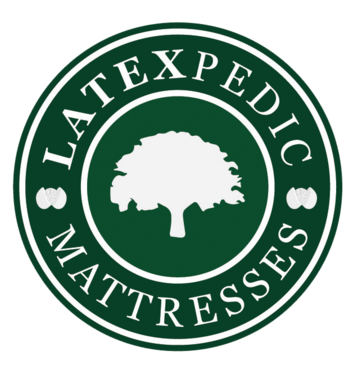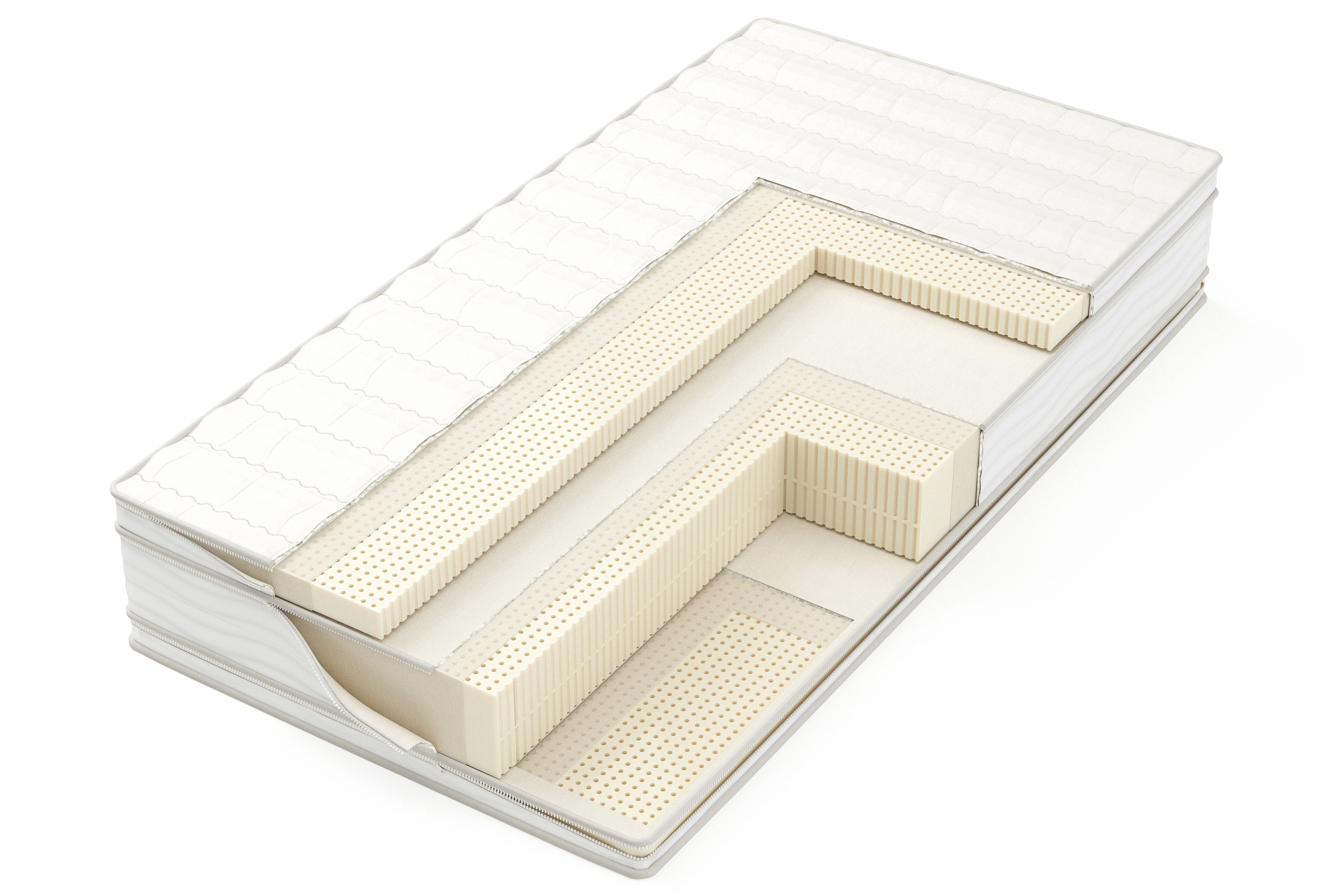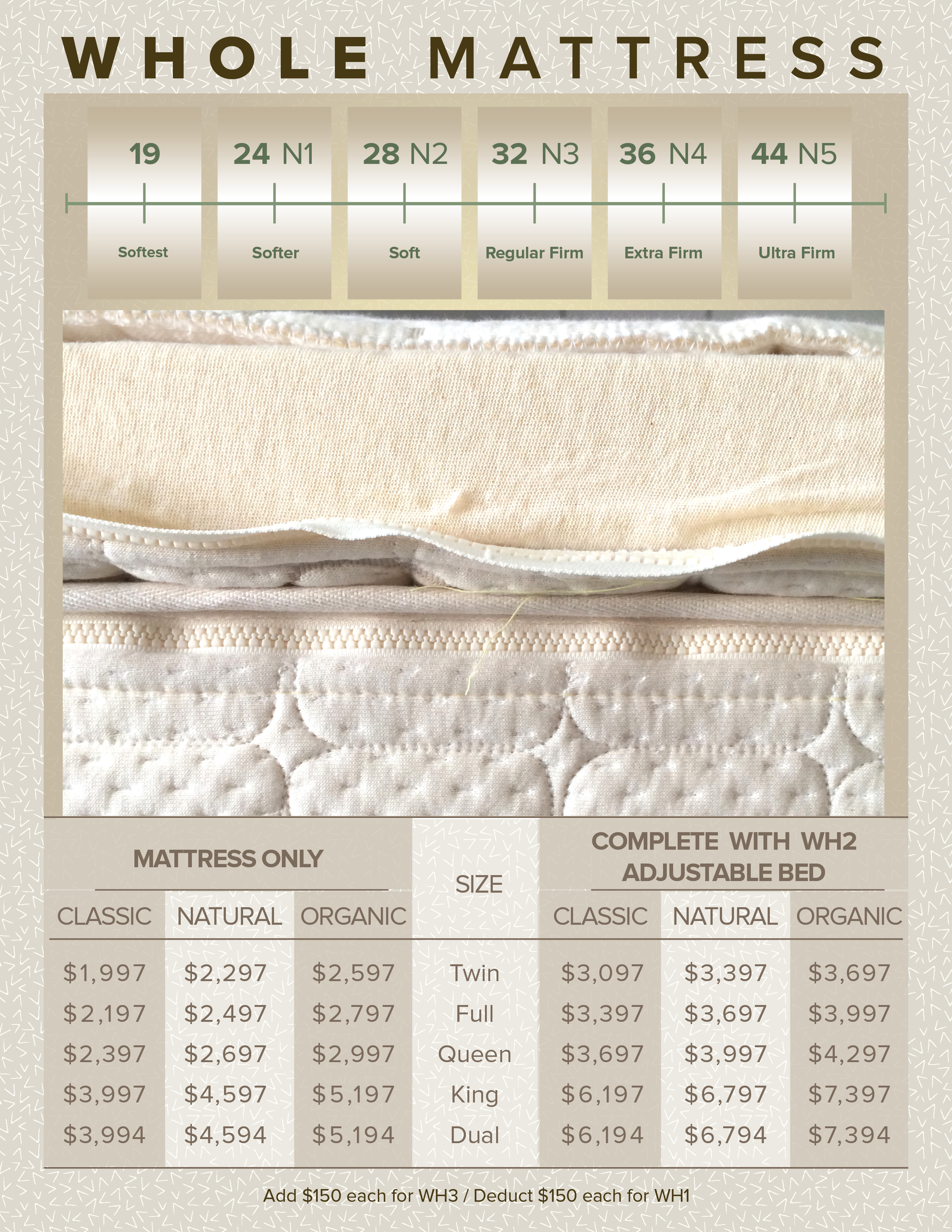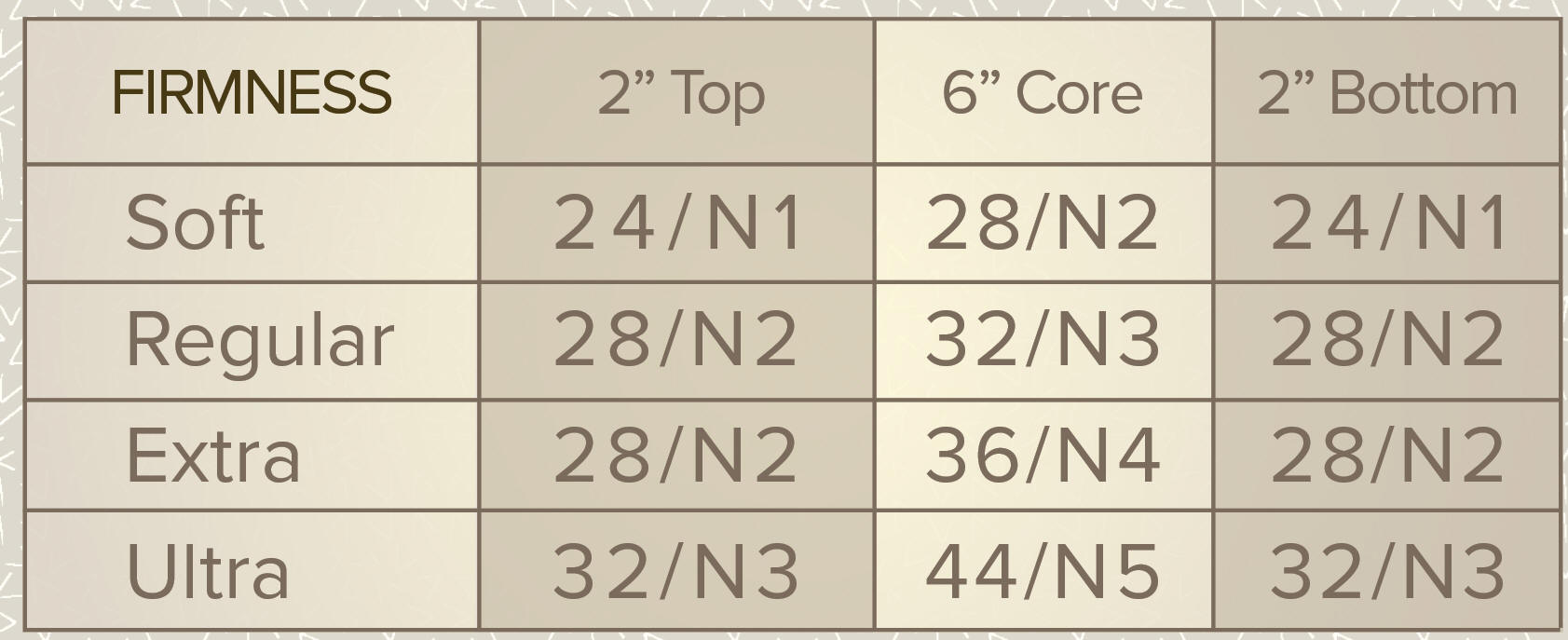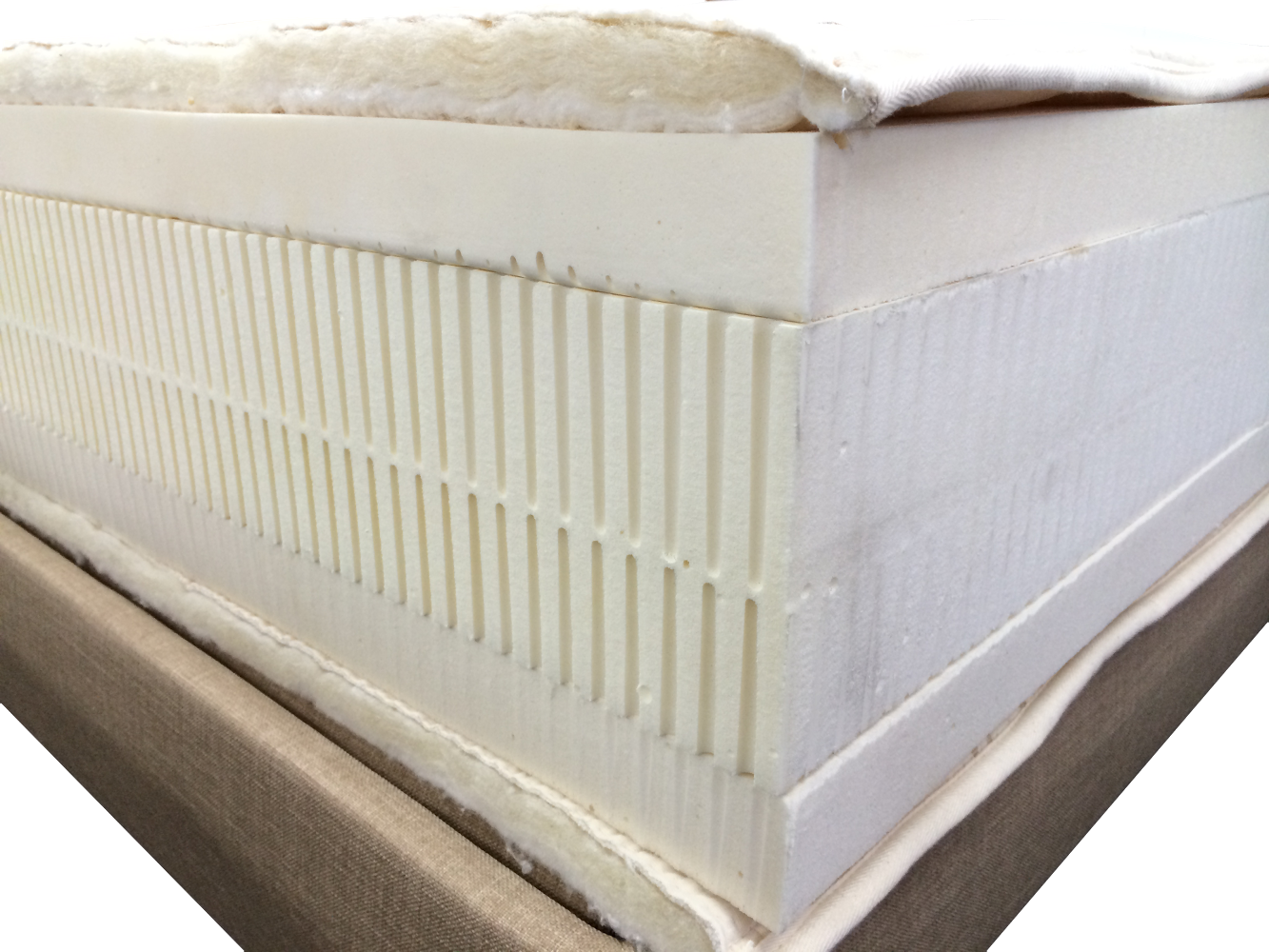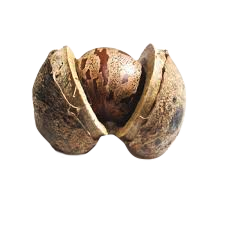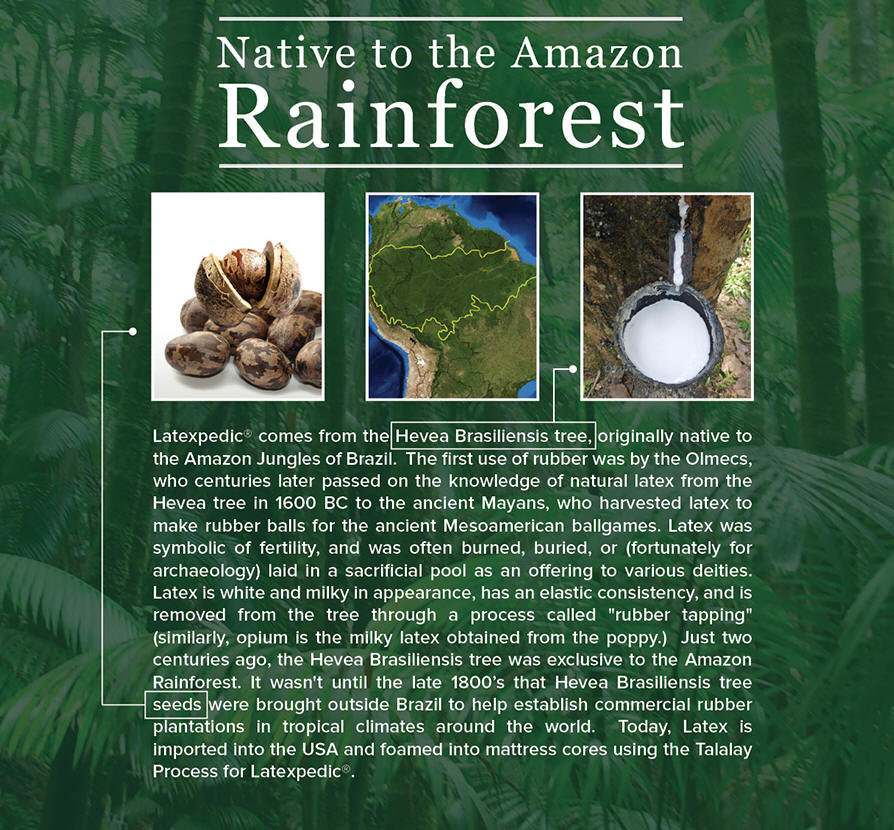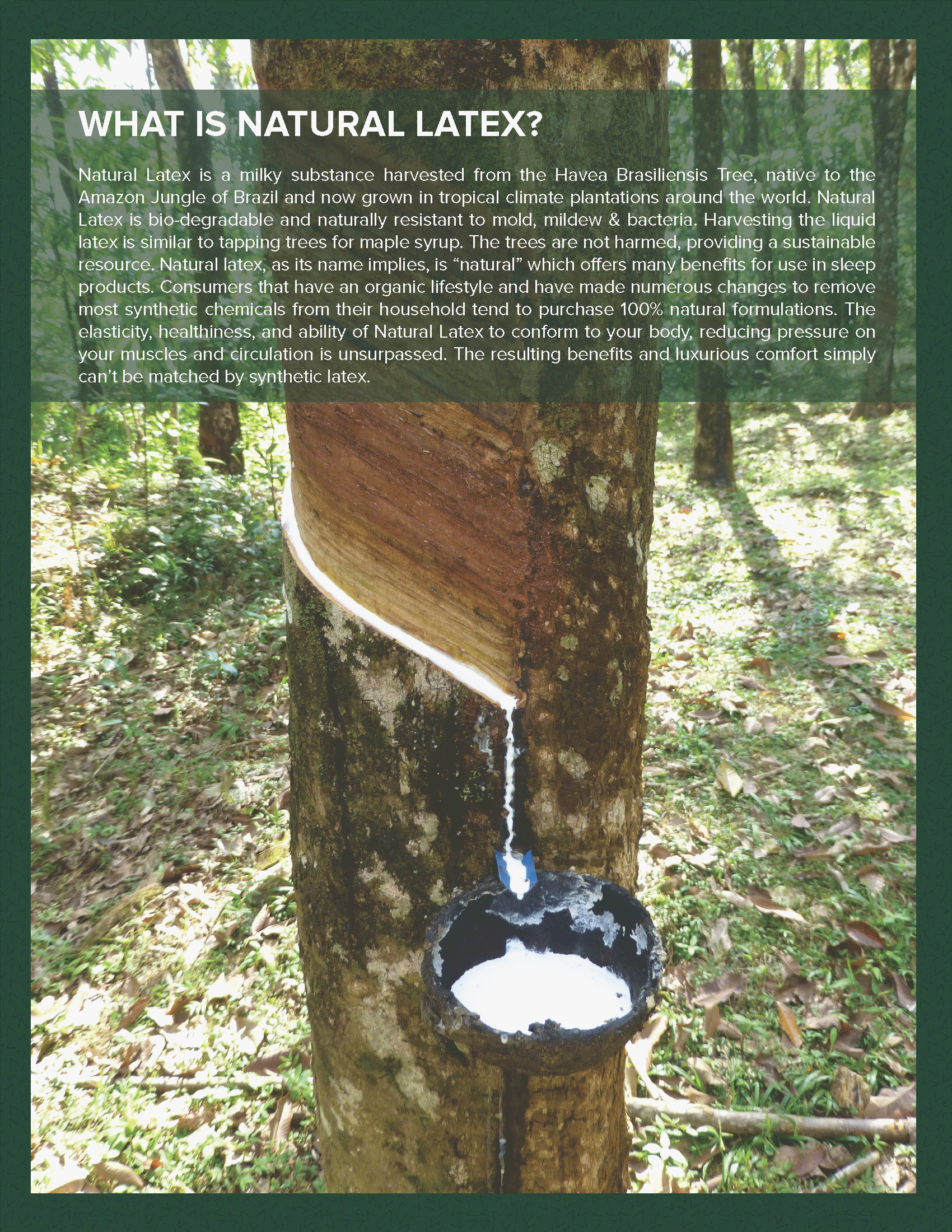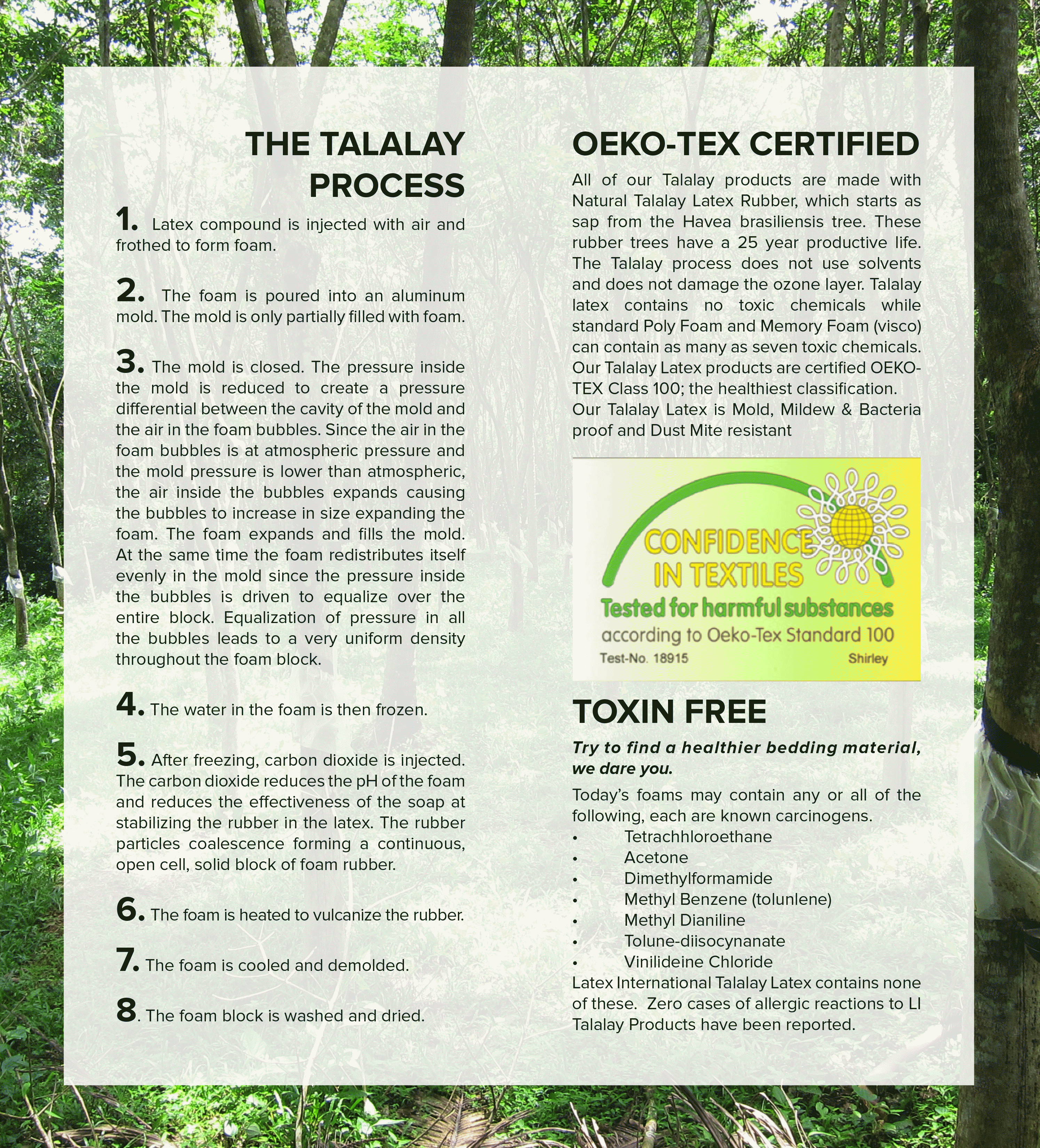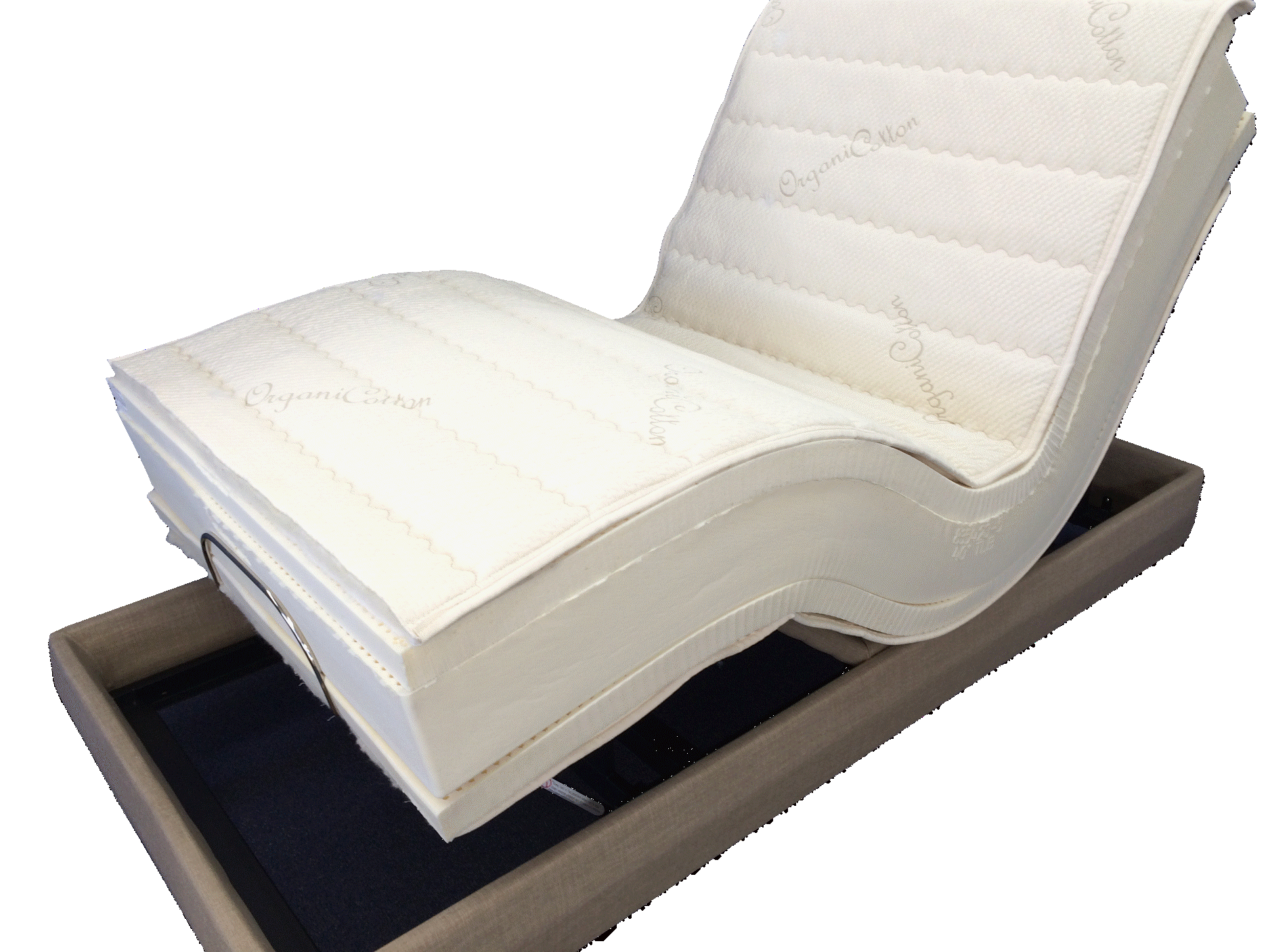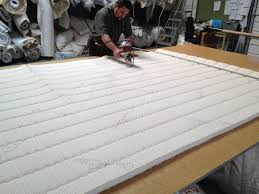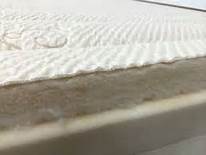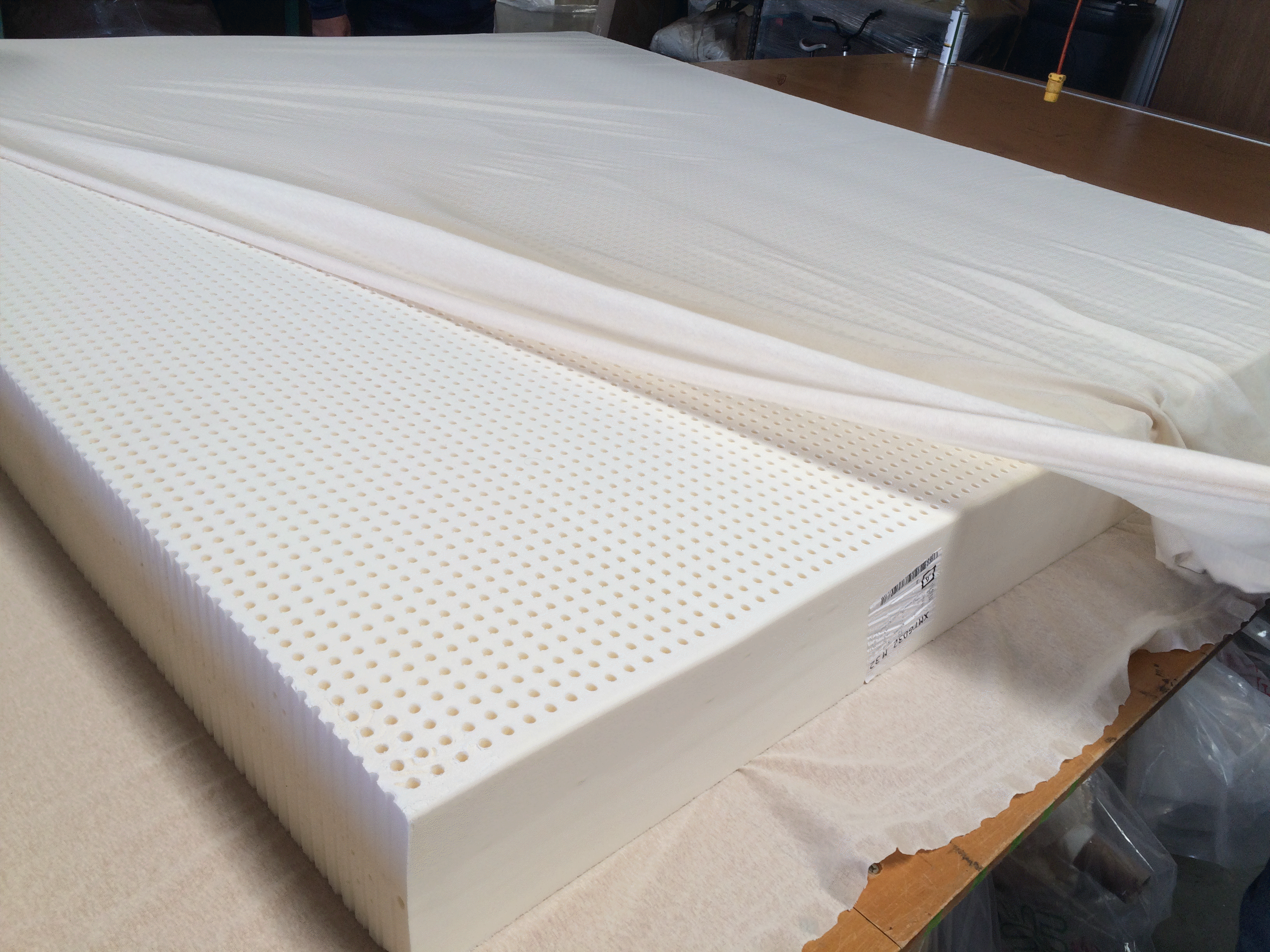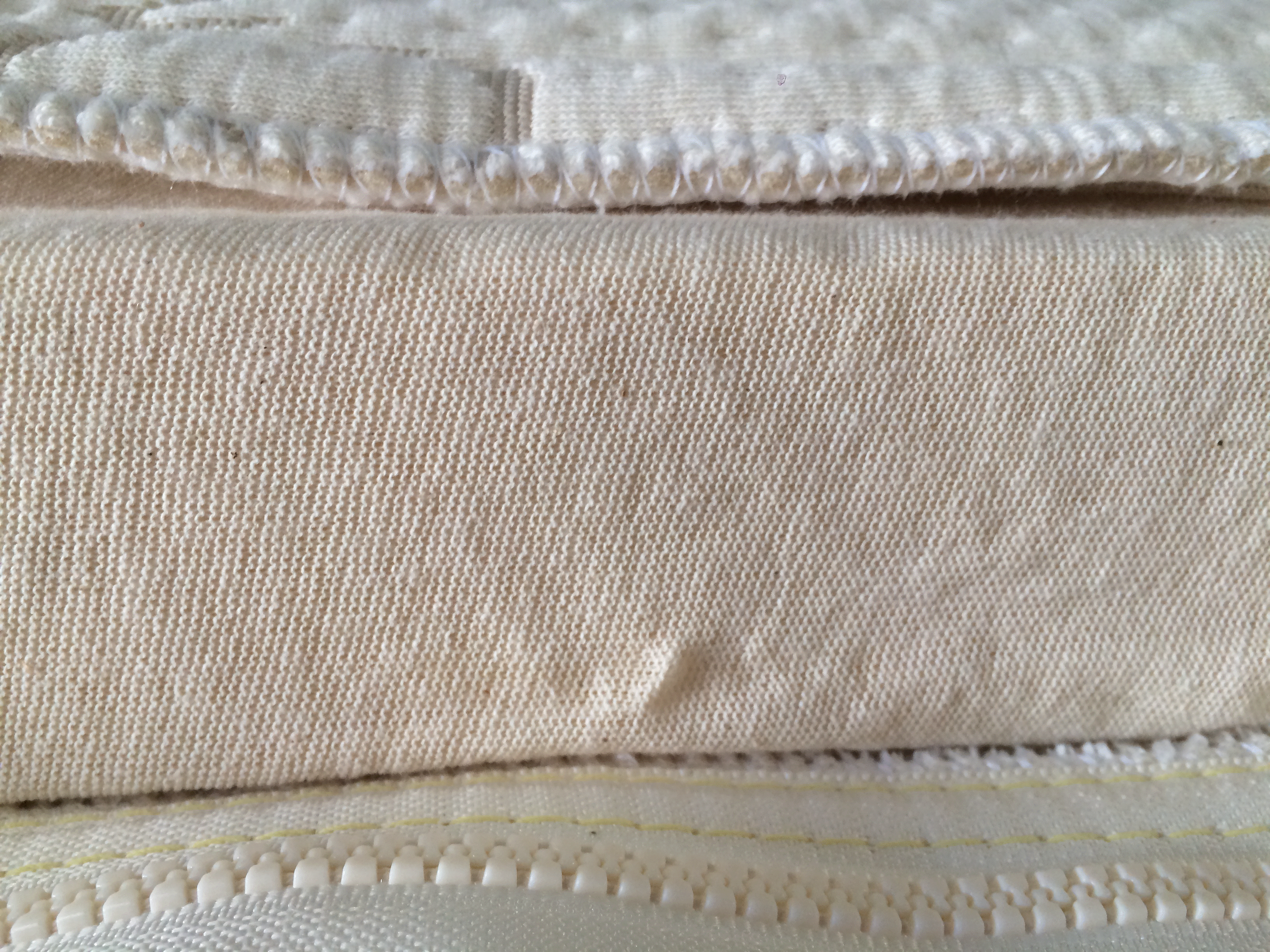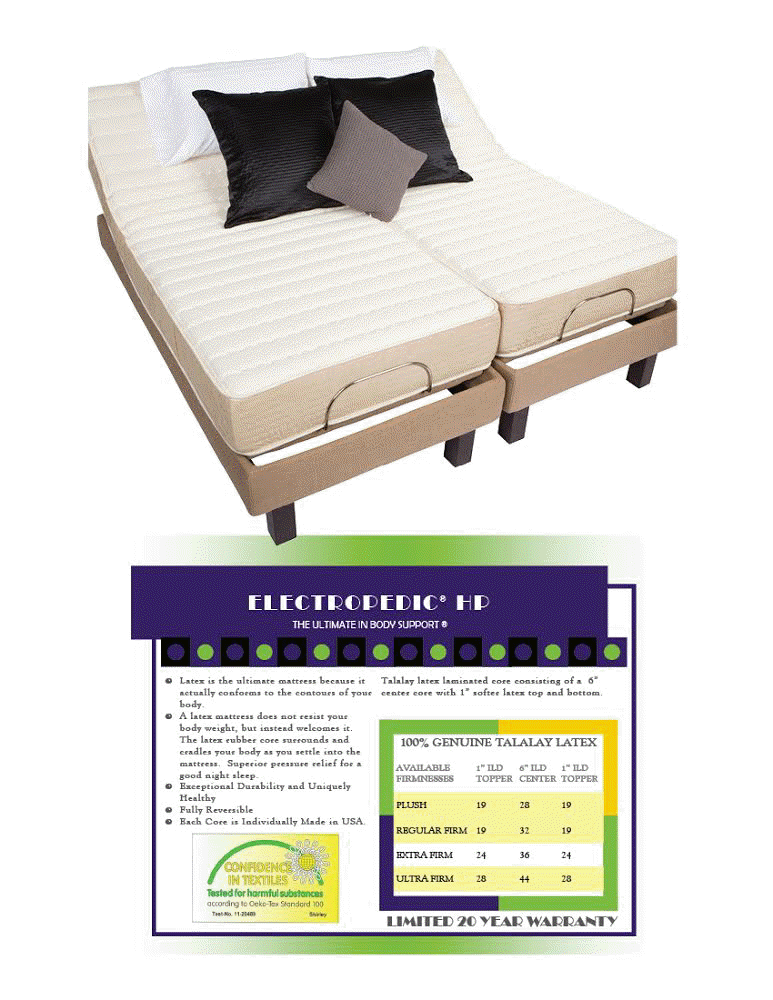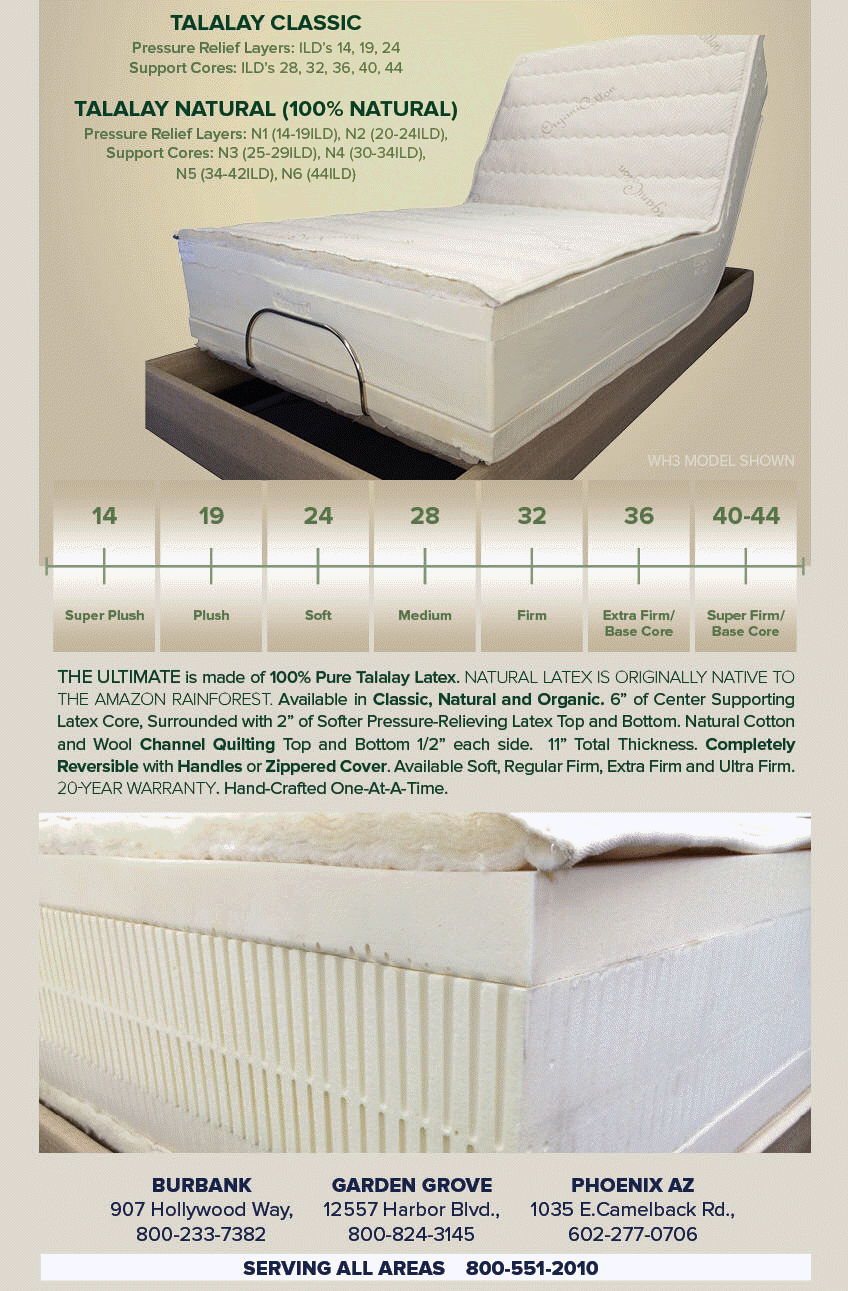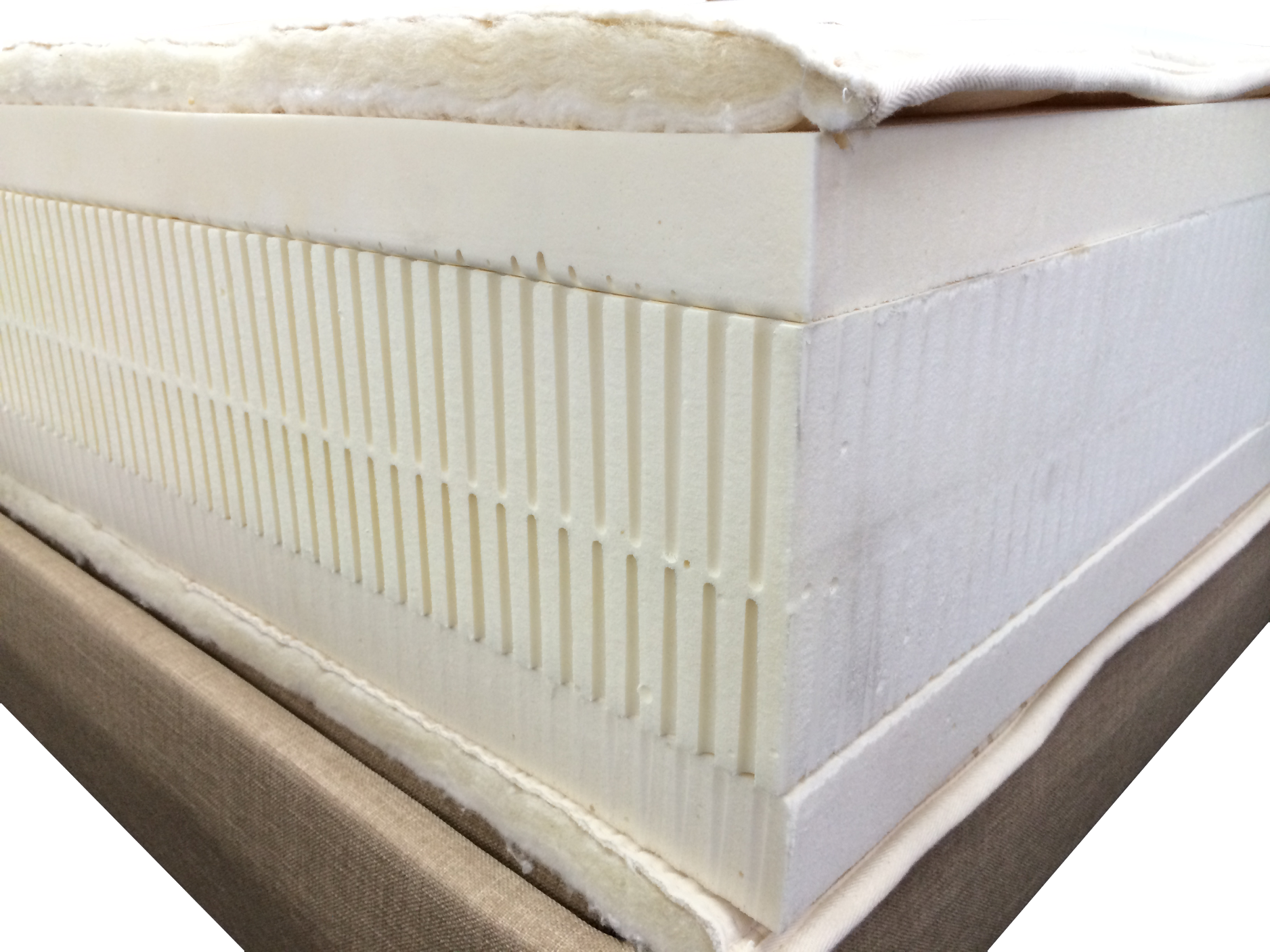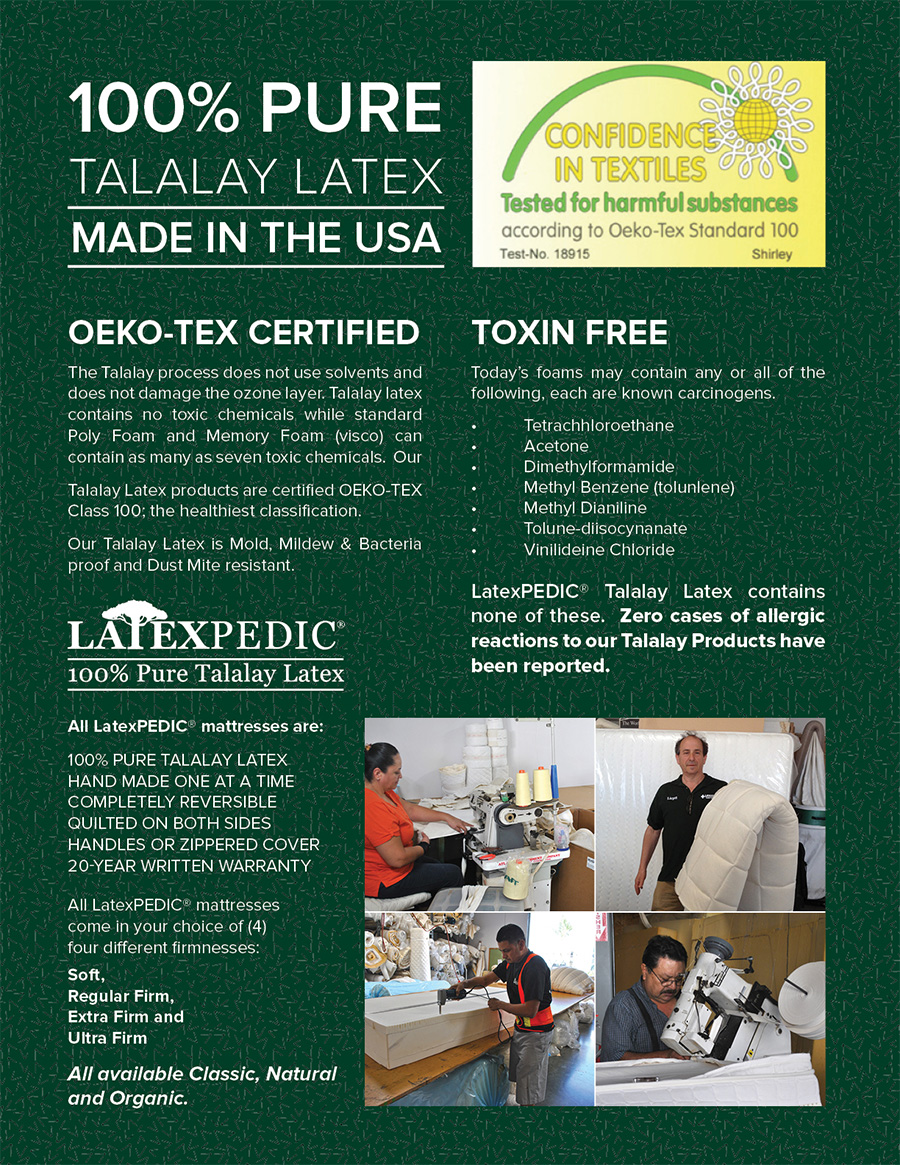
NATURAL WHOLE MATTRESSES
ARE MADE WITH 100% Talalay Latex
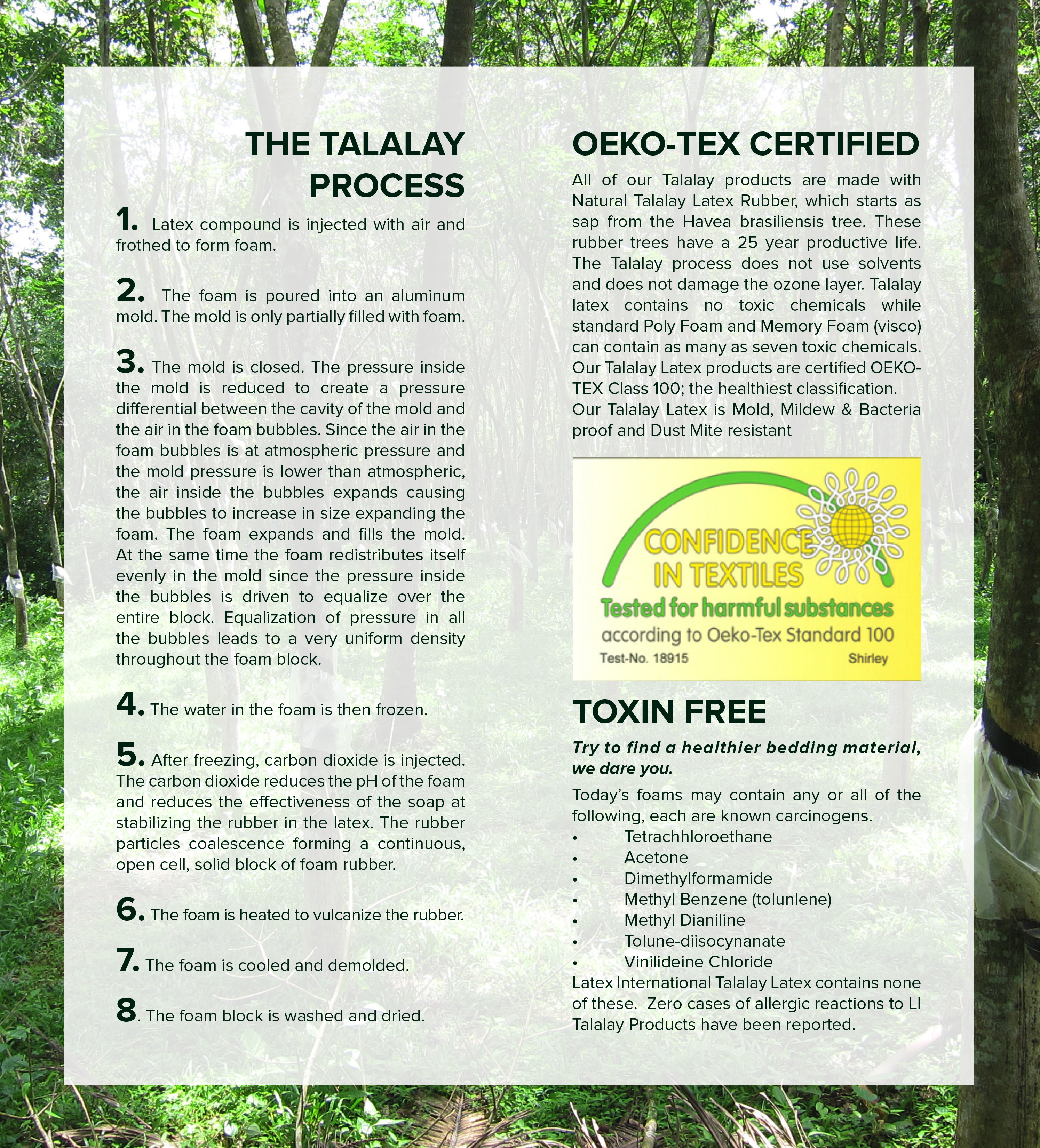
100% Talalay Latex
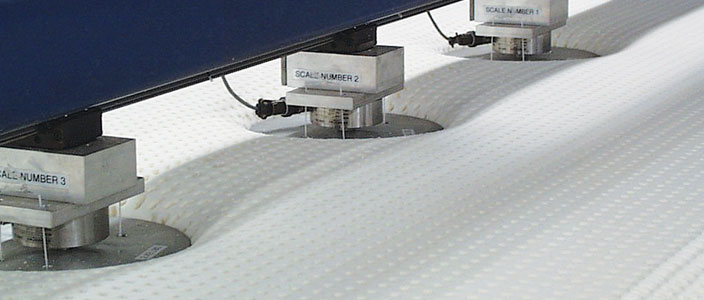
Every NATURAL WHOLE MATTRESS core is tested and rated in 9 separate places for firmness.
each core is serialized, date stamped and tested in 9 separate places for firmness
100% Talalay Latex
Step 1: Compounding
Combination of liquid latex, soaps and rubber curing agents are mixed together in a temperature controlled, stainless steel tank to create a batter.
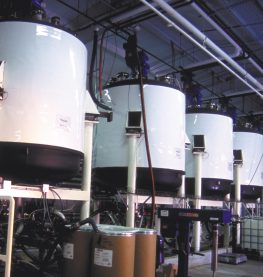
Step 2: Molding
The batter is transferred to the pressroom where it is whipped into a froth and injected into an aluminum pincore mold. The pins create the unique aerated cell structure of our latex.
The mold is sealed and a vacuum is pulled to extract air and completely fill the mold cavity with foam.

Step 3: Flash Freeze
The batter is frozen to a temperature of -20 degrees. Freezing is unique to the Talalay process to prevent particles from settling, ensuring a consistent cell structure.

Step 4: Heated to Gel into Solid Form
CO2 is added to whip the recipe into a frothy state. Temperatures exceeding 220F-degree are applied to cure the recipe as it is baked into a solid state.

Step 5: Cooling
The solid latex is cooled and removed from the mold.

Step 6: Fresh water rinse for purity
The latex mattress core is removed from the mold and placed on a conveyer belt that brings it through a five-stage fresh water washer, which removes latex proteins, residual soaps and curing agents. The multi-stage fresh water rinse is also unique to the Talalay process.

Step 7: Curing Process
The mattress is transported to a two-lane dryer, which completes the curing process and removes residual moisture.

Step 8: Quality Testing – Only the best pass the test!
Once dry, EVERY mattress undergoes a nine-point firmness consistency test and infrared technology scan to ensure they meet our stringent quality standards.

Whole Mattress Quality
Talalay vs. Dunlop
Not all latex is created equal. Talalay and Dunlop are the two processes used in mattress production. The Dunlop process was developed in 1929 and was the first method used to produce latex material for bedding.
As technology progressed, the Talalay process was developed by the Talalay family during World War II. The Talalay process is significantly more complex and costly, but produces softer, more buoyant and luxurious finished products.
So why is there such a difference? The Talalay process takes four times longer than Dunlop with two additional process steps—vacuum and flash freezing—which improve the consistency, quality and feel of the finished latex.
The vacuum evenly distributes the latex throughout the mold, allowing us to create precise and varied feels in the finished Talalay latex. A mattress is made more firm or plush based on how much latex is poured into the mold. With the Dunlop process there is little ability to vary the feel of the finished product because the liquid latex is poured onto a conveyor belt resulting in a dense piece of latex every time. The only way to soften the feel of Dunlop latex is to add “fillers” into the liquid latex formula, which can result in solid latex that is flaky and breaks down quickly.
The flash freezing step gives Talalay its consistent feel. Liquid latex is a suspension of rubber particles in water, like a shaken snow globe. Flash freezing prevents the latex particles from settling to the bottom while gelling into a solid product. This means that the resulting piece of solid Talalay latex has the same consistent feel from top to bottom, and side to side. The Dunlop process doesn’t utilize a freeze step. Therefore, the rubber particles settle to the bottom while the liquid latex is gelling into a solid form, resulting in a variation of feel from top to bottom.
Think of Talalay latex like a chocolate soufflé; although the process is long, the end product is a buoyant, airy, complex delight. Dunlop latex is more like a pound cake; tasty, but dense and flat in comparison.
Quality Testing
Only the best pass our tests. Every single bed goes through compression and impact tests to ensure durability and consistency.
Compression Test
This test simulates the effect of body impressions on the latex after a person lies on the bed for extended periods of time. Latex mattress samples are compressed to 50% of their original thickness for 22 hours at 158 ° F. When removed, the percent loss in thickness is measured. The greater the loss thickness, the more likely the bed will take a body impression over time—which leaves you sleeping in a hole.
| Talalay Global Latex | Imported European Talalay Latex | Dunlop Latex | |
| % Compressed | 3.3% | 5.7% | 11% |
| Comparison | — | 73% more compressed | 223% more compressed |
Impact Test
The impact test measures Indentation Load Deflection (ILD), a measure of firmness. The mattress core is ILD tested and then placed into a machine where a weight is dropped on the latex repeatedly for 24 hours. The product is then removed from the machine and allowed to recover for 24 hours. ILD is measured again. The greater the loss in firmness from first measurement to the second means the latex is more likely to breakdown over time. To ensure we produce the most consistent feeling products, Talalay Global ILD tests nine locations on every mattress core. We are the only manufacturer in the industry to do so.
| Talalay Global Latex | Imported European Talalay Latex | Dunlop Latex | |
| % Loss of Firmness | 6% | 16% | 18% |
| Comparison | — | 167% more loss | 200% more loss |
How is Talalay latex different than Dunlop latex?
Even though they’re both latex, there are significant differences between our Talalay latex and Dunlop latex. They’re manufactured using different processes; it takes 14 hours to make a Talalay latex mattress core, but less than one hour to make a Dunlop mattress core.
But the most important differences are benefits to you. Here are six ways Talalay latex better serves you:
- Breathability
Talalay latex is FOUR TIMES more breathable than Dunlop Process latex. Why? Talalay latex is aerated and has a large cell structure. Dunlop latex is denser latex and has a small cell structure. - Pressure Relief
Talalay latex is 33% more pressure relieving than Dunlop latex. Why? The vacuum process used in making Talalay latex allows for the latex to stretch like a rubber band so it conforms to your body. Dunlop latex is a poured process that creates latex which is less flexible. The rubber is more like the rubber in an eraser. - Durability
Talalay latex is THREE TIMES more resilient than Dunlop latex. Why? The Talalay latex process creates a round cell structure. As the latex is compressed, a round cell structure does not break itself down. The Dunlop Process creates a snowflake cell structure. As you might imagine, as you compress a snowflake cell structure, the material breaks down. - Consistency
Talalay latex is the same feel from top to bottom and consistent from side to side. Dunlop process latex is softer on top and firmer on the bottom. Why? The Talalay process uses flash freezing that prevents the particles from settling after curing. Because there is no freezing in the Dunlop process, particles setting in the latex during curing creating firmness on the bottom. - Clean
Talalay latex can wash out more proteins (which is a primary cause of latex allergies) than Dunlop latex. Why? The Talalay latex process uses a five-stage fresh water rinse process. - Support
Talalay latex provides not only pressure relief, but also support. Why? Talalay latex is a two dimensional material. It offers support and pressure relief. Dunlop Process latex is a one-dimensional material. It primarily offers pressure relief similar to foam.
What's the difference between Talalay latex and Memory Foam?
Both Talalay latex and Memory Foam are marketed as the premium mattress materials, but they are very different.
Talalay latex is a rubber. Memory Foam is a foam, which doesn’t provide both support and pressure relief.
Talalay latex rubber is a natural material derived from the rubber tree. Memory foam is a synthetic material and is a petroleum-based product.
Talalay latex rubber has a breathable design and cell structure that provides a temperature neutral environment. Memory foam is a dense material, which needs heat to activate its pressure relieving quality. It usually sleeps warmer.
You “sleep on” Talalay latex rubber and it has an uplifting effect. You “sleep in” memory foam which provides a “sinking” effect.
Talalay latex rubber is two dimensional material. It is both supportive by being uplifting and is also pressure relieving. Most memory foam mattresses use memory foam in the pressure relief layer and traditional poly foam in the support layer.
Talalay latex rubber is “bottomless.” Even when you lay on your side, your body does not “bottom out” into a hard layer in the mattress or on the foundation. Memory foam allows you to bottom out onto what is underneath it.
Talalay latex rubber is a fast response material. When you move, it immediately responds to your new position. Memory foam is a slow response material.
Talalay latex rubber is hypoallergenic and does not off-gas. Memory foam is a petroleum-based product.
Talalay latex rubber is extremely durable. Because it is vulcanized, it is the most resilient material available in a mattress.
Talalay latex rubber is inherently antibacterial and antifungal.
What health and safety standards does Talalay Global operate under?
How is Talalay latex environmentally friendly? What are the reasons to invest in a Talalay latex mattress?
The Talalay Advantage
Do you know what’s inside your mattress? When you have a Talalay latex mattress, the answer is simple; 100% Talalay latex. Every Talalay latex mattress starts out as a tree. We harvest the liquid latex from the tropical Hevea brasiliensis tree and turn it into the finest mattresses, using eco-friendly production methods at our manufacturing facility in Shelton, CT.
Talalay latex mattresses are more breathable, resilient and offer unmatched support and pressure relief; the key elements to getting the best night’s sleep you have ever had! You never have to compromise comfort because we offer a full spectrum of “feels” from firm to ultra-plush. Each bed is made by hand and put through rigorous quality testing before it enters your bedroom.
Invest in quality. Invest in the environment. Choose Talalay.
6 Reasons to Choose Talalay Latex
It’s Healthy
Our Talalay latex is
It’s Breathable
Mattresses and pillows made of Talalay latex breathe up to seven
times better than other types of latex or foam products, allowing
for cooler sleep. The materials in most mattresses and pillows don’t
allow body heat to dissipate, which can interrupt your sleep, but
Talalay latex has a breathable design and cell structure that
creates a temperature neutral environment.
It’s Hypoallergenic
Talalay latex is ideal for people with allergies and asthma. It is
naturally mold, mildew and dust mite resistant and is inherently
antibacterial and antifungal.
It’s Environmentally Friendly
The Talalay process features natural, biodegradable ingredients that
come from renewable resources and water-based raw materials: natural
latex, air and water. The rubber trees are not harmed in the latex
harvesting process. In fact, they are productive for 25 years,
absorbing carbon dioxide from the atmosphere and helping to reduce
greenhouse gases. We are also mindful of our energy and water
consumption during the manufacturing process. Our manufacturing
automation optimizes energy usage for the molding stage and our
state of the art factory features energy efficient lighting. Our
multi-stage washer has been engineered so it minimizes the amount of
water consumed without reducing the quality of the finished product.
It’s Made in the USA
Our manufacturing facility is based in Shelton, CT, USA.
It Doesn’t Off-Gas
Talalay doesn’t off-gas like synthetic foam or polyurethane. You may
notice the “new bed smell” of the latex when it first arrives, but
you can rest assured that no harmful chemicals are being released
because Talalay is made of only natural ingredients.
EARTH'S MOST PERFECT MATERIAL
Talalay Latex is the premier material in bedding. Our Talalay delivers a unique buoyant quality which relaxes muscles and relieves tension, lifting away the pressures of the day while you sleep. Careful attention to detail at every step makes certain this amazing feel comes through in the finished product.
1035 E
CAMELBACK RD., PHOENIX 800-733-1818
907 HOLLYWOOD WAY, BURBANK CA
800-233-7382
12557 HARBOR BLVD., GARDEN GROVE CA
800-824-3145
OPEN MON-SAT 10-5, SUN 12-4
SERVING ALL AREAS: 800-727-1954
